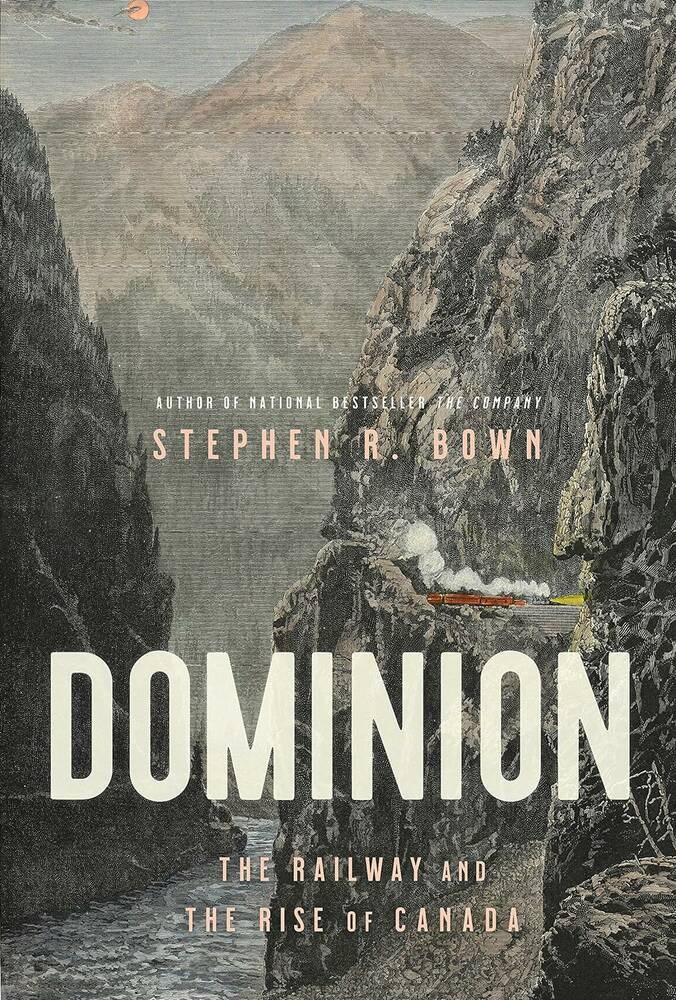Dominion: The Railway and the Rise of Canada
By Stephen R. Bown
Doubleday, 400 pages, $39.95
Reviewed by Dave Obee
Victoria had several special roles to play in the creation and construction of the Canadian Pacific Railway a century and a half ago. That might seem odd, given that the mainline never touched Vancouver Island — but our roles cannot be denied.
Consider, for example, the fundamental reason a national railway was built: To connect the new province of British Columbia with the rest of Canada. Victoria was the economic hub of the new province, the centre of population, and the capital city all rolled into one.
The problem was that in 1871, when British Columbia joined Confederation, Victoria’s ties to the rest of Canada were weak, compared to its ties to San Francisco. The California city was responsible for most communication and shipping with the outside world. Mail sent from Victoria went through the United States.
A transcontinental railway had been in operation in the U.S. for two years, with its western terminus in San Francisco. That made it easy to get between Victoria and the rest of Canada — by heading south and crossing the States.
With the largest city in B.C. relying on the United States for its existence, and with the province squeezed between American territory to the north and south, something had to be done to protect British interests. That something was a railway.
Admittedly, it was not all about Victoria. Winnipeg, in the new province of Manitoba, was closely tied to St. Paul, Minnesota. Something had to be done there as well, and that increased the commitment to a railway.
It was one thing to be committed to the project, however, and quite another to complete the country’s “first and greatest megaproject,” as author Stephen R. Bown describes it.
There were two massive obstacles in the way: The Canadian Shield in Ontario and the mountains and river valleys of British Columbia. Both could be defeated, but it would take many years and more money than anyone would have guessed when the project was proposed.
The route was a moving target, to be blunt. Major sections of the railway were under construction before final decisions were made about where the trains would go. The people in charge were not always sure which mountain pass to use — or even if the passes existed beyond their own imaginations.
One important decision that had to be made about the route in B.C. was critical to Victoria, because Prime Minister John A. Macdonald had promised that the railway’s western terminus would be here. That would have meant the railway would cross the Rockies via the Yellowhead Pass rather than the Kicking Horse Pass to the south, and would have crossed the Interior to Bute Inlet, well north of Vancouver.
At that point, the line would have had to hop across smaller islands for 40 kilometres or so to get to Vancouver Island. It would have required 10 kilometres of tunnels, and bridges longer than had ever been built.
Impractical and impossible, the Bute Inlet route lost to the one proposed for Burrard Inlet. And Victoria lost its chance to be the western terminus; that honour went to a new city, one that stole the name of our island because, the thinking went, the name Vancouver would mean more than names such as Gastown and Granville.
But while the railway was being planned and built, Victoria was a centre of activity. Surveyors were based here. The top people who financed the railway also came through here when it was time to see what was happening. The Chinese workers, who did most of the hardest, most dangerous jobs, also passed through here.
Once the railway was finished, Victoria could only watch as the new city of Vancouver became the most important centre of the province.
Many books have been written on the early history of the railway, but Bown’s Dominion: The Railway and the Rise of Canada stands out. One major difference is that we have more awareness of the impact of the railway on the people who had lived on the land for centuries.
For the railway to be viable, the Prairies needed to be opened for white settlement. That meant the Indigenous and Métis population had to be pushed out of the way.
The magnificent buffalo herds, which once dominated the prairies, were already being slaughtered by the time the railway came through. At that point, they were doomed; how could a homesteader cope with a herd wiping out the year’s crop?
All of this meant the nomadic lives of the Indigenous inhabitants came to an end. They were forced into reserves, and they were forced into starvation.
The development of the railway has been celebrated for decades, but it’s essential to note that while many people gained because of it, many others lost.
This reckoning is overdue. Bown’s work will ensure that the birth of the CPR will be seen in a new light.
The reviewer is the editor and publisher of the Times Colonist.
>>> To comment on this article, write a letter to the editor: [email protected]


-thumb.png;w=120;h=80;mode=crop)
